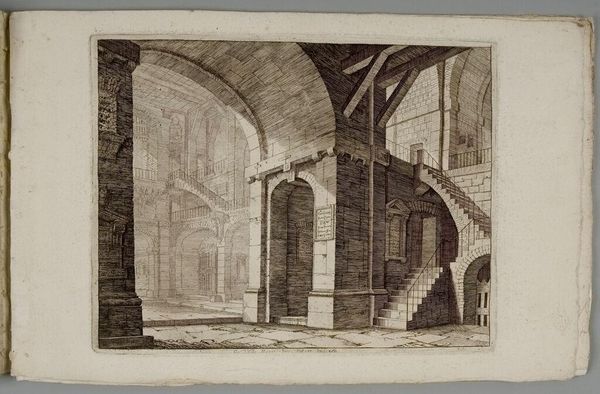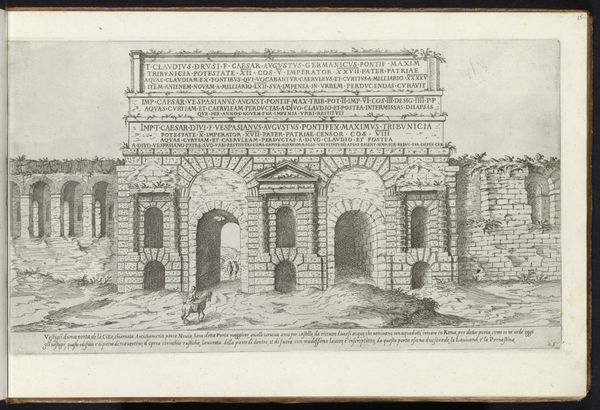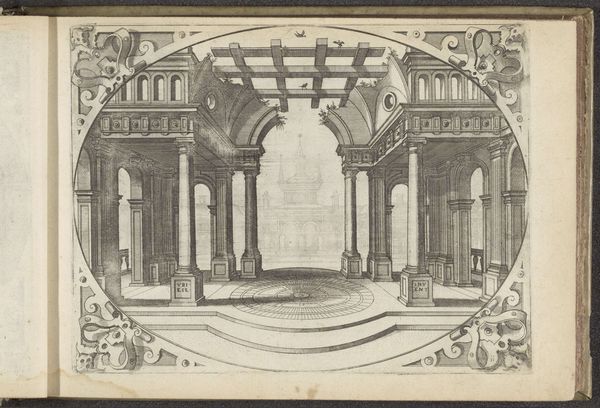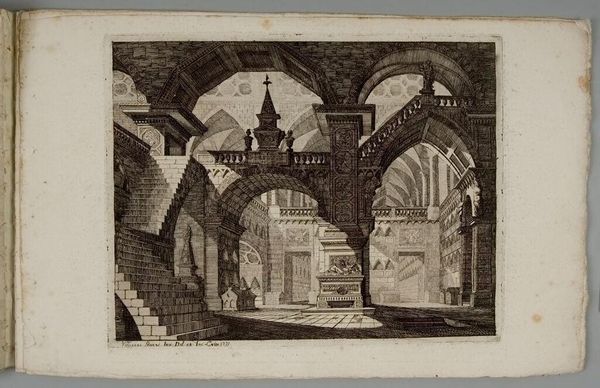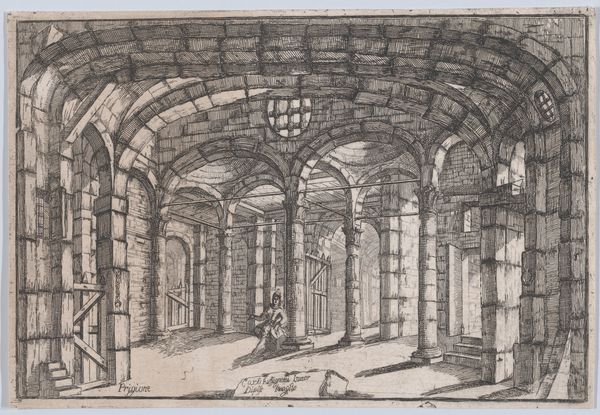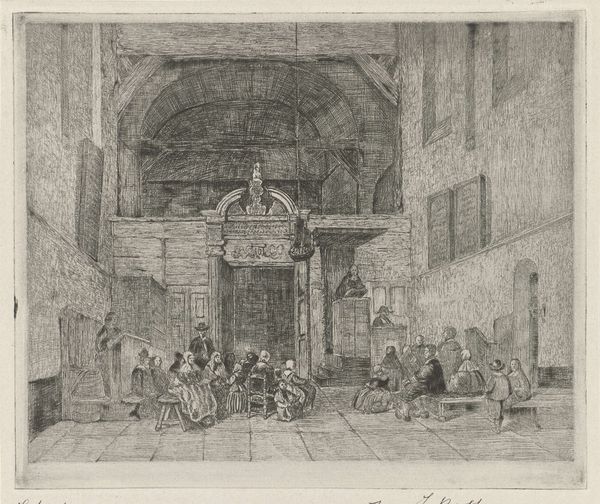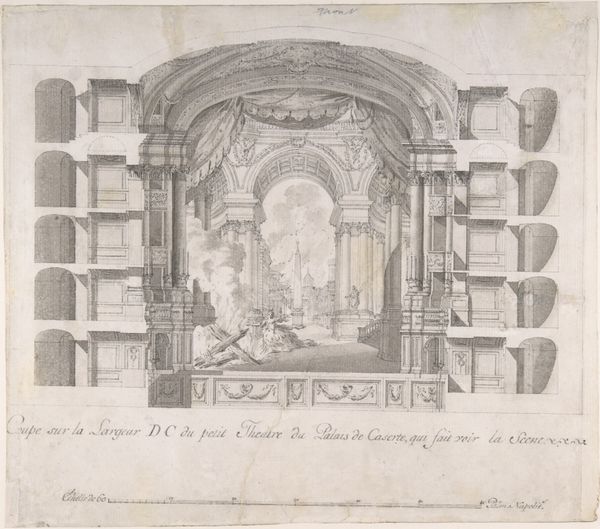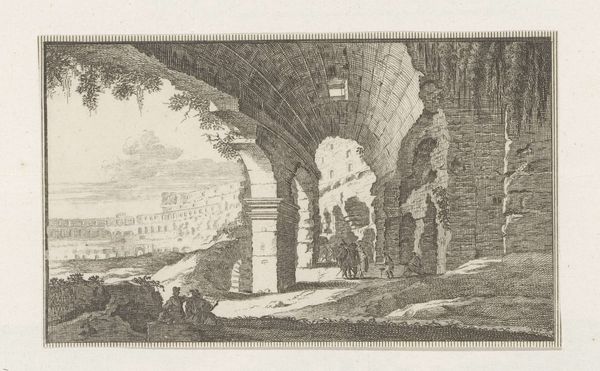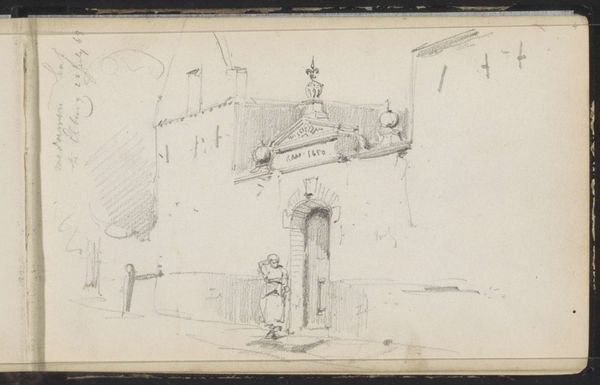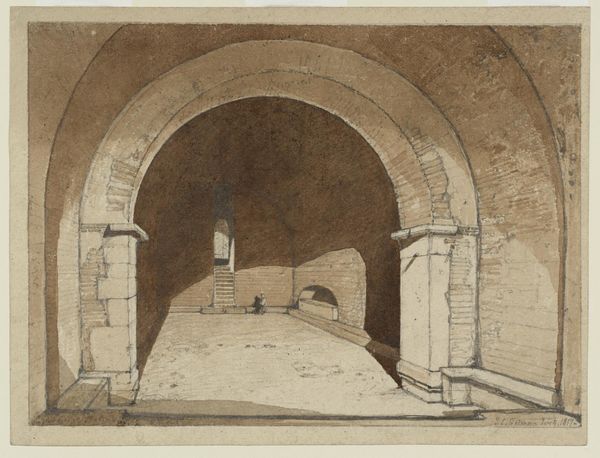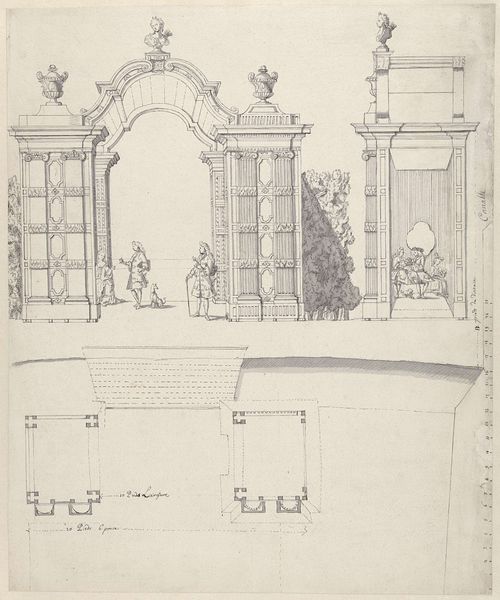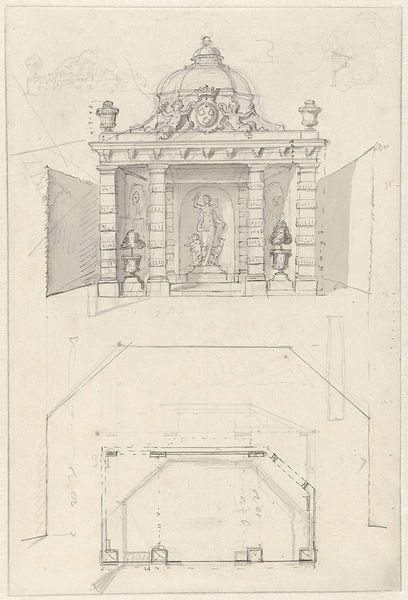
Atrium in the Egyptian Style, with a Coffered Ceiling c. 19th century
Dimensions: plate: 26.5 x 38 cm (10 7/16 x 14 15/16 in.)
Copyright: CC0 1.0
Curator: This is Domenico Amici’s "Atrium in the Egyptian Style, with a Coffered Ceiling," a fine linear print. The Harvard Art Museums hold this particular plate, which measures about 26 by 38 centimeters. Editor: It’s undeniably imposing, a somewhat sterile space, despite the figures included. The heavy stonework and repetitive columns feel…oppressive. Curator: Well, the Egyptian style itself became a symbol of power, adopted and adapted through various empires. Notice the columns. These papyrus-form capitals were quite trendy in the early 19th century. Editor: Yes, the visual vocabulary is clearly meant to evoke that ancient authority, and the suggestion of endlessness, the rows receding into the distance. Is it meant to overwhelm? Is it architectural propaganda? Curator: Perhaps. Certainly, Neoclassical artists used Egyptian motifs to communicate ideas about permanence and grandeur, linking back to an ancient, supposedly unchanging, past. Editor: It leaves me wondering about the effect these visual symbols had on the people encountering them, and what continuities or interruptions they represented within the broader cultural landscape. Curator: I agree. The use of Egyptian forms speaks volumes about the cultural projections of Amici’s time.
Comments
No comments
Be the first to comment and join the conversation on the ultimate creative platform.
